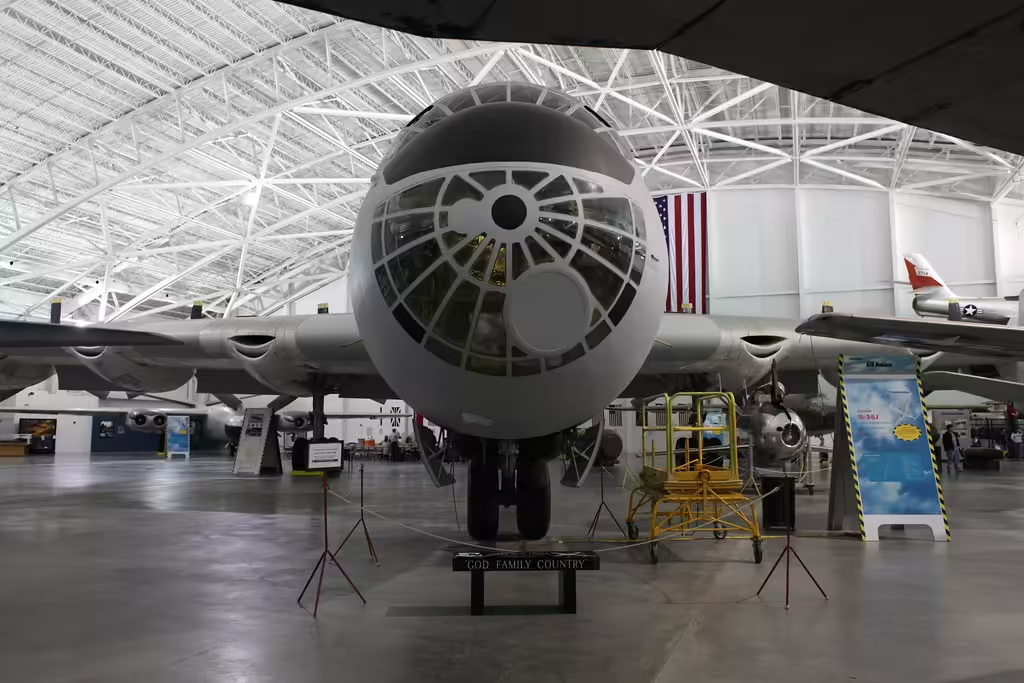
Table of Contents
It is one of the largest aircraft of all time, nestling between the iconic B-29 and durable B-52 bombers. Although its brothers lived longer, the B-36 was more notable for its 10 engines, which included different propulsion systems. Only four aircraft of the Consolidated Vultee Aircraft Corporation (later renamed Convair) still exist of more than four hundred aircraft built.
What inspired it?
The aircraft was developed to meet the US Army Air Forces’ requirements for an intercontinental-range strategic bomber. In the latter stages of World War II, it was considered necessary as a defense in case Britain fell with the rest of the continent.
The first operational B-36As were delivered in June 1948 to the 7th Bomb Group of the Strategic Air Command at Carswell Air Force Base, across the runway from the aircraft manufacturing facility. However, it was too late to have any effect.
Trying B-36 on for the size
The Convair-built B-36 was two-thirds longer (162 ft) than the B-29 and significantly larger than any of its predecessors. The aircraft has the longest wingspan of any fighter aircraft in history, at 230 feet (70.1 m). Even Boeing 747 could not reach this height.
Six Pratt & Whitney R-4360 engines set in a ‘pusher’ configuration gave the massive aircraft a cruising speed of 230 mph. Four General Electric J47s were installed on incoming and existing aircraft soon after manufacturing began, increasing top speed to 435 mph, giving rise to the B-36 phrase “six turning and four burning.”
It is the largest piston-powered fighter aircraft ever built. One of the only aircraft powered by both types of engines, the final production model and retrofitted engines had a combined output of 44,000 horsepower. The B-36 did not have an in-flight fuel system, but its 7.5-foot (2.3-meter) wingspan allowed it to carry the fuel needed for a 10,000-mile range. The crew could access the engines and landing gear through tunnels built into the wings.
The front and rear cabins were connected by another crawlspace. The tunnel was only two feet in diameter and passengers had to be dragged down 85 feet in wheeled carriages. Six bunks, a small toilet for a 40-hour mission and a galley for cooking were all in the rear compartment.
Mission complete
384 units of the type were built for the US Air Force before production of the type ceased in August 1954. Despite a maximum payload of 87,200 lb (39,600 kg) and a range of 10,000 miles (16,000 km), the Peacemaker never saw combat. The aircraft quickly became obsolete with the introduction of the all-jet B-52.
We also have a aviation YouTube channel to flying, did you know that?
Several B-36s were used for photo reconnaissance missions. To accommodate a working nuclear reactor, a model was modified. The Republic F-84F Thunderstreak was specially modified for launch and recovery, another aircraft equipped with unique technology. Additionally, two versions were dubbed the XB-60 and modified to an all-jet design.
The final four
- City of Fort Worth (52-2217A), the last B-36 built, is housed at the Pima Air and Space Museum in Arizona.
- The Castle Air Museum in Atwater, California is home to the only known version of the B-36 (RB-36H), serial number 51-13730.
- Model 52-2217A is housed at the Strategic Air Command and Aerospace Museum in Nebraska, along with one of two XF-85 Goblins – a “parasite fighter escort” meant to fly beneath the B-36.
- The last surviving B-36 (52-2220) is at the National Museum of the United States Air Force in Ohio.
READ | This is why the B2 bomber was the most expensive aircraft ever built
READ | Once the army dropped a 5 megaton bomb on an American state.
READ | Russia was outraged when an F-89 fighter launched a “mini” nuclear bomb rocket.


3 thoughts on “History of the Convair B-36 Bomber “Peacemaker”.”